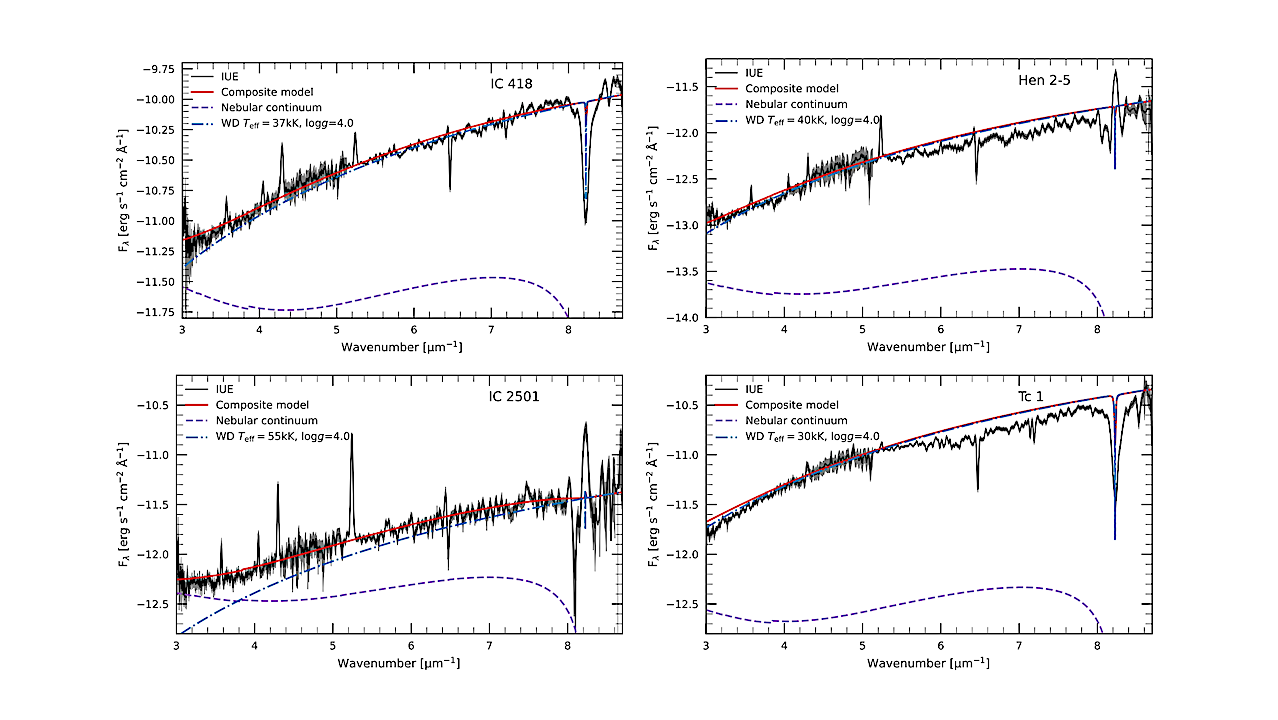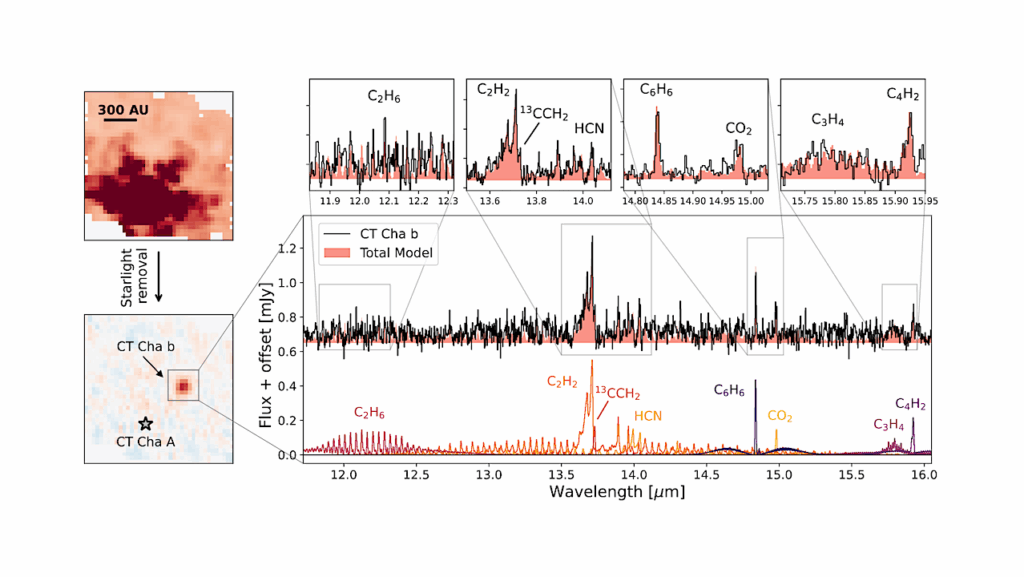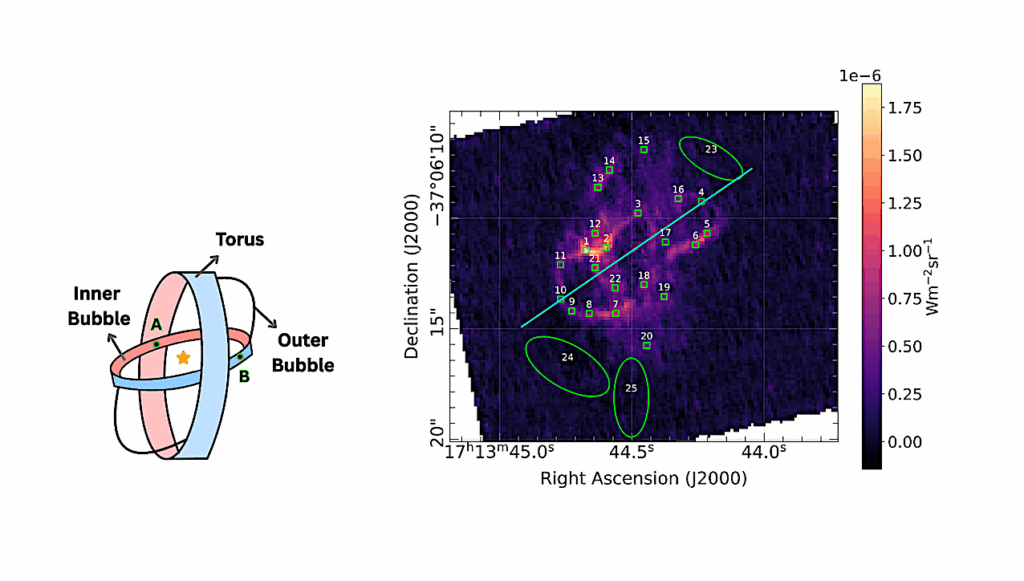An Ultraviolet Spectral Study Of Fullerene-rich Planetary Nebulae

Several planetary nebulae (PNe) have been found to contain both polycyclic aromatic hydrocarbon (PAH-like) species and fullerenes (C60) distinguished by their mid-infrared emission.
Previous laboratory and astronomical studies suggest that the formation of both species could be related to the decomposition, by photochemical processing, of hydrogenated amorphous carbon (HAC) grains. Then, HACs and, seemingly, big-fullerene related species (e.g., carbon onions) have been suggested as potential carriers of the UV bump at 2175Å and the far-UV rise common to interstellar extinction curves.
Our goal is to investigate the UV bump with the possible presence of a HAC extinction component in the International Ultraviolet Explorer (IUE) spectra of C-rich PNe; both with detected and non-detected fullerenes. The considered sample includes three C60-PNe (Tc 1, IC 418, and IC 2501) and the non-C60-PN Hen 2-5. Independently of the presence of C60 in their circumstellar envelopes, we found that the UV bump in all sample PNe is well explained by interstellar extinction, suggesting that species different from those of the foreground insterstellar medium, e.g., large fullerene-related species like carbon onions, are not the carrier.
Interestingly, we found that PNe Tc 1 and Hen 2-5 show an absorption in the FUV rise. Their IUE continuum spectra may be very well reproduced by including the extinction curve of HAC-like very small grains (VSG). The possible presence of both species, HAC-like grains and fullerenes (C60), in Tc 1 could support the HAC photochemical processing scenario for the formation of fullerenes in the complex circumstellar envelopes of PNe.
M. A. Gómez-Muñoz, D. A. García-Hernández, A. Manchado, R. Barzaga, T. Huertas-Roldán
Comments: 9 pages, 8 figures. Accepted for publication in MNRAS
Subjects: Solar and Stellar Astrophysics (astro-ph.SR); Astrophysics of Galaxies (astro-ph.GA)
Cite as: arXiv:2401.09868 [astro-ph.SR] (or arXiv:2401.09868v1 [astro-ph.SR] for this version)
Submission history
From: M. A. Gómez-Muñoz Dr.
[v1] Thu, 18 Jan 2024 10:30:37 UTC (761 KB)
https://arxiv.org/abs/2401.09868
Astrobiology, Astrochemistry,








